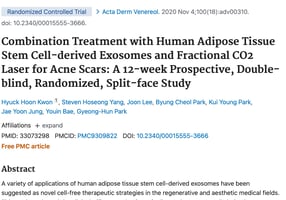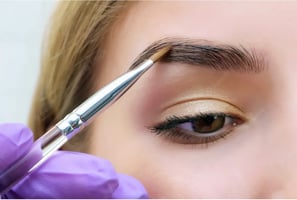When it comes to using your Health Savings Account (HSA) for cosmetic treatments, it's important to...
Is Microblading Covered by a Health Savings Account?
Microblading is a popular beauty treatment that is gaining popularity in Canada. The treatment involves using a handheld tool to deposit pigment into the skin, creating the appearance of fuller, more defined eyebrows. The treatment is semi-permanent, lasting for several months before fading, and can be an effective way to enhance one's appearance.

One question that many Canadians have about microblading is whether it is covered by a health savings account (HSA). An HSA is a type of savings account that allows individuals to set aside funds on a tax-free basis to pay for qualifying medical expenses. But is microblading considered a qualifying medical expense in Canada?
The answer is maybe, microblading is not always covered by an HSA in Canada. In order for an expense to be eligible for reimbursement from an HSA, it must be considered a medical expense under the Canada Revenue Agency (CRA) guidelines.
These guidelines specify that medical expenses must be incurred for the:
- diagnosis
- cure
- mitigation
- treatment
- or prevention of disease
in order for them to be eligible for reimbursement from an HSA.
Microblading is not considered a medical treatment in Canada, as it is primarily a cosmetic procedure that is performed for aesthetic purposes. While some people may have medical conditions that affect the growth or appearance of their eyebrows, such as alopecia or a thyroid disorder, these conditions would need to be specifically diagnosed and treated by a healthcare provider in order for the expense to be eligible for reimbursement from an HSA.
What if microblading is prescribed by a physician and delegated?
If a medical treatment, such as microblading, is prescribed by a physician and delegated to a healthcare provider, such as a nurse or a licensed aesthetician, it may be eligible for reimbursement from a health savings account (HSA) in some cases.
In order for a medical expense to be eligible for reimbursement from an HSA, it must be considered a qualifying medical expense under the Internal Revenue Service (IRS) guidelines in the United States or the Canada Revenue Agency (CRA) guidelines in Canada. These guidelines specify that medical expenses must be incurred for the "diagnosis, cure, mitigation, treatment, or prevention of disease" in order for them to be eligible for reimbursement.
If a physician prescribes a medical treatment, such as microblading, for the treatment of a specific medical condition, and the treatment is delegated to a healthcare provider, the expense may be eligible for reimbursement from an HSA. However, the medical condition must be specifically diagnosed and treated by the physician in order for the expense to be eligible.
It is always a good idea to check with your HSA administrator to confirm the eligibility of a specific expense. The administrator will be able to provide guidance on whether the expense is eligible for reimbursement based on the specific details of your situation.



